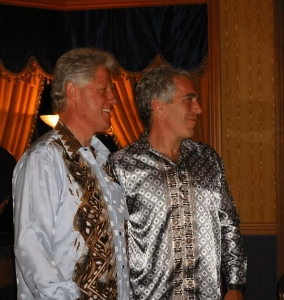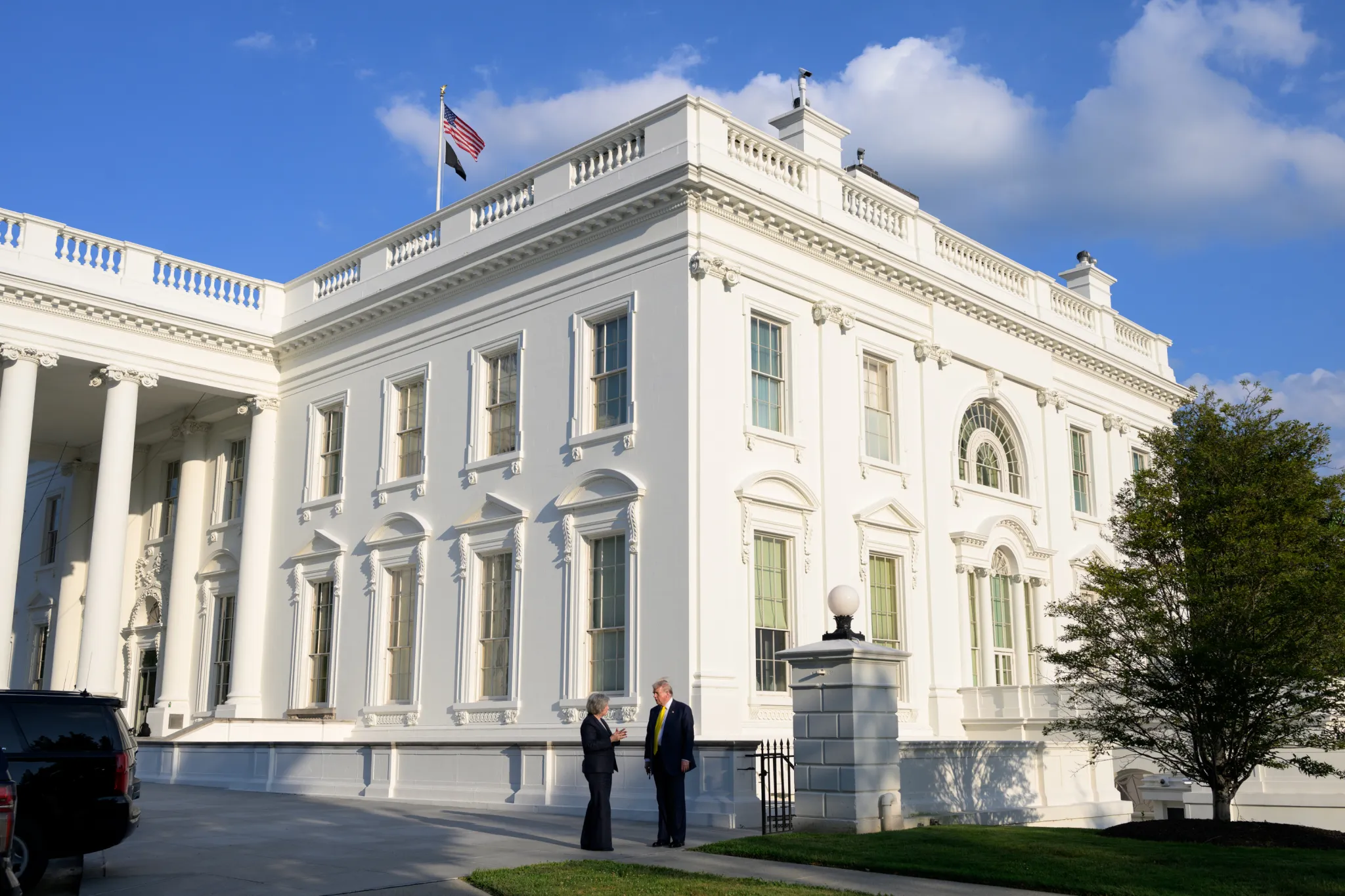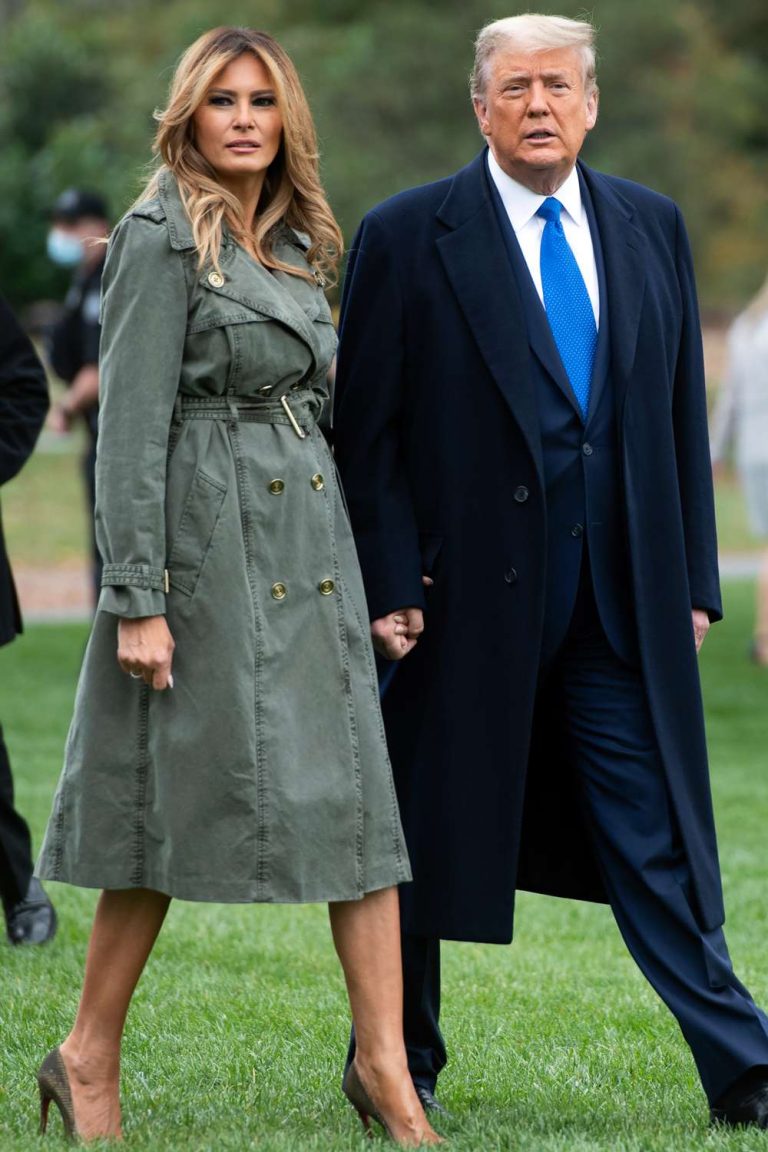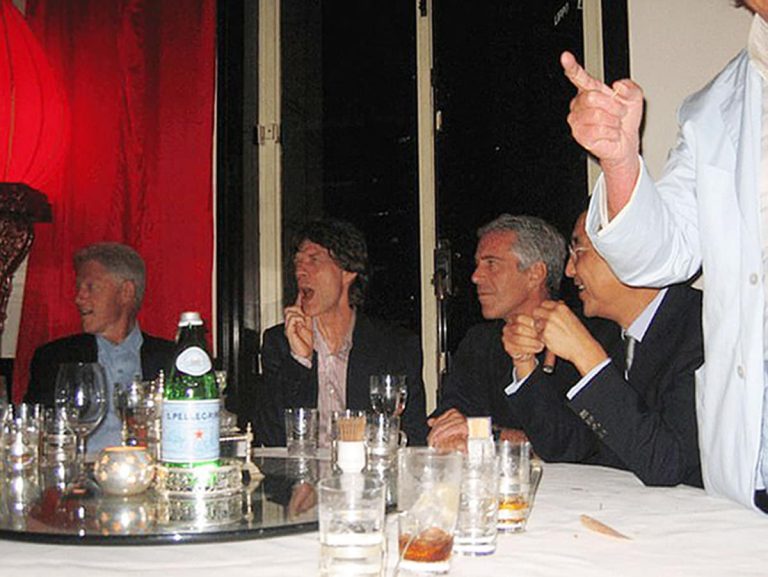When Americans think of the White House, they often imagine a pristine, historic building filled with tradition, symbolism, and national pride. It’s more than just the president’s home—it is one of the most recognized landmarks in the world, a functioning office, a ceremonial space, and a symbol of American democracy. Yet with every new administration, the White House undergoes subtle or dramatic changes. Now, with Donald Trump back in office, the spotlight is once again on the question: how much does it actually cost to live in the White House, and who ends up footing the bill?
Since beginning his second term in January, President Trump, now 79, has pursued a sweeping renovation project that has sparked fascination, debate, and even disbelief online. His redesign of the Oval Office, as well as other parts of the presidential residence, has transformed the look and feel of spaces that most Americans recognize instantly from history books, television broadcasts, and iconic photographs. While some see his updates as bold and extravagant, others view them as unnecessary and at odds with the White House’s historical character.
But beyond the design choices, these renovations raise broader questions about the financial side of living in the White House—questions that intrigue many Americans who wonder how taxpayer money, private funds, and presidential allowances are used to maintain the most famous address in Washington.
Trump’s Renovation Vision
Trump has never been shy about his love of luxury design, especially when it comes to gold accents and large, attention-grabbing spaces. Since returning to office, he has committed himself to remodeling areas of the White House in line with his personal taste.
One of the most talked-about changes is the planned construction of a new 90,000-square-foot ballroom, an addition expected to seat up to 650 guests. Reports from July stated that Trump planned to allocate an eye-popping $200 million toward the project, with funding reportedly coming from his own personal wealth and undisclosed donors. Trump has described the ballroom as “much-needed” and “exquisite,” presenting it as an investment in both the White House’s future and in America’s image abroad.
Alongside this, other symbolic changes have caught attention. The Rose Garden, once lined with lush greenery, has seen its grass replaced with stone—a striking departure from tradition. Even more notably, Barack Obama’s official presidential portrait was relocated deeper into the East Wing, limiting its visibility to the public. Such moves, while technically within the president’s right, have triggered discussions about respect for presidential legacy and White House traditions.
The Golden Oval Office
Perhaps no change has generated as much public chatter as Trump’s redesign of the Oval Office. Side-by-side comparisons circulating on Reddit show how the room has shifted since Joe Biden’s presidency.
The once-muted and historically conservative decor has given way to bold golden embellishments. The walls are now lined with portraits framed in ornate gold, a golden trim decorates the ceiling, and the fireplace is flanked by gilded urns. Even the smallest details carry Trump’s personal brand—coasters inscribed with his name, trinkets, and lavish decorative pieces.
Social media commentary has been blunt, with one user joking that “it looks like they raided every Hobby Lobby within 25 miles for gold-colored decorations.” Others noted that while Trump’s design choices might match his personal style, they appear out of step with the restrained elegance typically associated with the White House.
Regardless of opinions, the dramatic contrast between Biden’s Oval Office and Trump’s has become a trending topic, sparking renewed curiosity about the costs associated with such renovations.
Who Pays for the President’s Lifestyle?
For most Americans, the idea of living rent-free in a mansion with 132 rooms, 35 bathrooms, 28 fireplaces, and a staff of nearly 100 might seem like the ultimate perk. But while the president does not personally pay rent or utility bills, the financial reality is more complex.
According to Yahoo! Finance, the yearly maintenance cost of the White House can range between $750,000 and $1.6 million. These funds cover everything from basic upkeep to staffing and security requirements. The president himself is not responsible for these expenses—they are covered as part of the operational budget of the executive branch.
Still, not every cost is absorbed by the government. For example, presidents and their families must personally pay for groceries, toiletries, dry cleaning, and personal luxuries. These bills are often quietly deducted from the president’s salary or settled directly. That means even something as ordinary as toothpaste or a carton of eggs is not free to the First Family.
Presidential Compensation and Allowances
The U.S. president’s base salary is $400,000 per year, paid in monthly installments, as reported by Fox Business. On top of that, presidents receive additional allowances:
-
$50,000 annual expense account for duties related to the office.
-
$100,000 for travel expenses.
-
$19,000 earmarked for official entertainment.
While these figures may seem modest compared to the scale of White House operations, they provide flexibility for smaller costs tied to the unique demands of the presidency.
In addition, the White House Historical Association notes that presidents are given up to $100,000 for redecorating the private quarters. If renovations exceed that amount, however, the president must cover the difference personally. Considering the lavish nature of Trump’s current projects, it seems likely that much of the expense has come from outside the official redecorating budget.
Renovation as Legacy
Presidential renovations are not new. Nearly every administration has left its mark on the White House, whether subtle or significant. John F. Kennedy and Jacqueline Kennedy famously revitalized the interior with historic furnishings, while George W. Bush upgraded security and communications systems. Barack Obama modernized the kitchen and made eco-friendly improvements.
Trump’s approach, however, has been particularly grandiose. By focusing on monumental projects like the ballroom and gilded Oval Office, his renovations emphasize spectacle and personal branding. Supporters view these changes as a reflection of Trump’s success-oriented philosophy, while critics argue they prioritize luxury over history.
Public Reaction and Debate
Reactions to Trump’s White House updates have been polarizing. On one hand, admirers argue that presidents should have the freedom to reshape their residence as they see fit. After all, the White House is both a private home and a working office. On the other hand, skeptics worry that extravagant design choices may clash with the building’s historical significance and symbolic neutrality.
Online, the discourse has ranged from satire to serious critique. Some social media users mocked the overuse of gold, comparing the redesign to a casino lobby. Others defended Trump, saying that as president, he has earned the right to put his stamp on the White House environment.
Regardless of perspective, the updates have reignited public curiosity about how presidents live day-to-day within the White House—and who shoulders the financial responsibility.
The Bottom Line
So, how much does it cost to live in the White House? The answer is layered. While the president enjoys taxpayer-funded housing, security, utilities, and maintenance, he or she is still expected to cover personal expenses. Meanwhile, major renovations are only partially subsidized by a $100,000 redecorating allowance, with excess costs falling on the president or private donors.
Trump’s current projects—including the ballroom and gilded redesigns—illustrate just how far a president can go when personal taste intersects with political symbolism. The $200 million ballroom, the golden Oval Office, and the reconfigured Rose Garden all highlight his desire to leave a bold, unmistakable mark on the White House.
For Americans, these developments raise enduring questions about the balance between tradition and change, private wealth and public duty, and the ever-evolving role of the presidency in shaping not just policy, but the very home that embodies American leadership.

James Jenkins is a celebrated Pulitzer Prize-winning author whose work has reshaped the way readers think about social justice and human rights in America. Raised in Atlanta, Georgia, James grew up in a community that instilled in him both resilience and a strong sense of responsibility toward others. After studying political science and creative writing at Howard University, he worked as a journalist covering civil rights issues before dedicating himself fully to fiction. His novels are known for their sharp, empathetic portraits of marginalized communities and for weaving personal stories with broader political realities. Jenkins’s breakout novel, Shadows of Freedom, won national acclaim for its unflinching look at systemic inequality, while his more recent works explore themes of identity, resilience, and the fight for dignity in the face of oppression. Beyond his novels, James is an active public speaker, lecturing at universities and participating in nonprofit initiatives that support literacy and community empowerment. He believes that storytelling is a way to preserve history and inspire change. When not writing, James enjoys jazz music, mentoring young writers, and traveling with his family to explore cultures and stories around the world.









